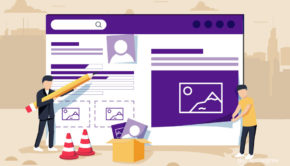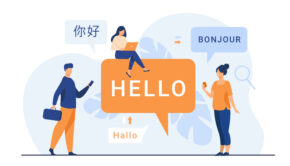Why Transcription Is More Relevant Than Ever
Transcription used to take the form of a secretary writing down notes as the boss or meeting presenter spoke, then typing it up in a document to share with everyone or save for posterity. It expanded to include writers and bosses dictating to a recording device so that a letter, presentation or other document could be typed up. As technology like voicemails, speech to text converters and audio files posted online expand, many will be surprised to learn that transcription is not only still relevant but more important than ever.
The Expansion of Technology
While we can record conversations and presentations easily, the sound quality often leaves something to be desired. Inexperienced speakers may stumble over their words. A good speaker in a noisy environment is hard to hear. Transcription allows the audience watching the video or listening to the audio to follow along. More importantly, it provides an accurate record of what was said. This is invaluable when someone is discussing a technical, scientific or medical topic. And it is something that speech to text software often screws up.
Technology is increasing demand for transcription. When people leave voicemails with their doctors or tech support, transcription services are regularly tapped to type up a detailed record of the conversation and save it in the customer’s file. The next time the expert refers to the file, all of that information is available to them. Furthermore, those records can be searched for keywords, whether it is the symptom of an illness or a computer virus.
The documented transcript of voicemails, tech support calls, customer service calls and conversations in the doctor’s office can be invaluable if there is a dispute. The transcript eliminates the he-said-she-said arguments in court. Instead, you can present the transcript that shows what the customer was told to do and that they agreed to do it.
The Need to Provide Accessibility
Transcripts are critical for making all of your content accessible. A transcript provides an accurate and easily read version of an audio recording or video. If you have a transcript, you have everything required to create smooth, professional closed captioning of your videos. Transcripts can be used to give audiences something to follow along with the speaker, allowing some to expand their vocabulary and keeping the attention of those who otherwise may lose focus. For some, the ability to re-read the transcript until they can comprehend the content is essential to being able to truly understand it. For others, the written transcript can be converted to Braille, so they can follow along in a format they can read as they listen. Or they can read it via Braille, since there isn’t a way to play the audio file.
The Solution to the Language Barrier
Transcription is invaluable in bridging the language divide. For example, a professional transcript can provide your audience with an easily read version of the conversation that they can understand regardless of someone’s accent or mispronunciations. A transcript minus filler words can be readily translated into text that a foreign language audience could understand.
Transcripts can prevent problems when someone is speaking in a foreign language. A transcript gives them something to read from instead of stumbling through a memorized speech in a foreign language. They don’t have to deal with flourishes from the director or corrections from those around them. A transcript shown beneath their words will also eliminate the confusion regarding what they said. It can provide the simplest form of what someone said, because it gets rid of the repetitive explanations they may have used trying to express a concept. The biggest benefit is seen when it provides the shortest accurate translation of what someone said, so the audience can focus on diagrams and product demonstrations instead.
The Impact on the Internet
Transcripts can improve the accessibility of your content not only with the immediate audience but the internet, as well. When the transcript of audio or video is posted alongside that content, the text becomes searchable. It could lead to people more easily finding your content through a web search. And your audience can search the transcript itself for something that was said.
Another regular use of transcripts is as content published elsewhere. The transcript of a video interview can be published on your website or in an article, whether or not you link to the original content. This captures readers’ attention. It can also offset the pauses, personal ticks and audible distractions that may have made a presentation unwatchable. A perfect example would be this case study done by Tomedes on a video translation work they have done for one of their clients, wherein transcription is also involved. The transcription work proved to be effective for the promotion of their business, not only would their video be indexed on search engines but the transcription itself could become valuable content to derive quotes from.
Summary
Technology hasn’t reduced the demand for transcription; it has increased it. Nor can AI and other technologies yet replace transcription. And your audience and customers often demand it.
Article source: https://www.rev.com/blog/future-of-transcription-technology



















